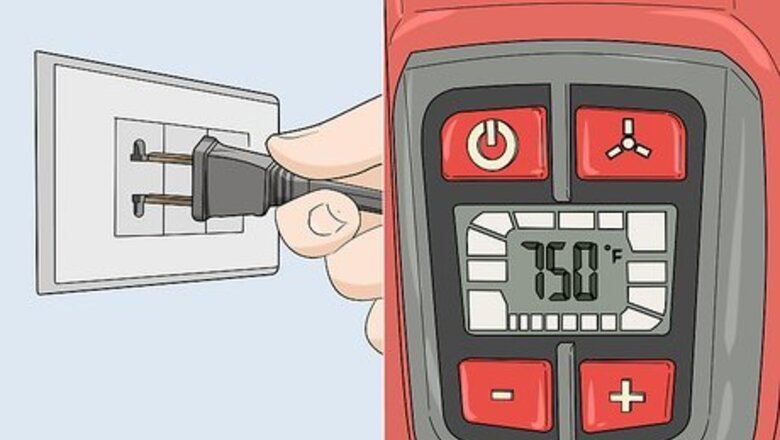
views
- If you're using a heat gun to dry paint, start off at a lower temperature—around 450°F (232°C)—and gradually increase it as you need to.
- Hold the gun about 2 inches away from the painted surface and move the nozzle back and forth continuously so you don't overheat the paint.
- To protect your work space, remove any flammable materials from the area before you start using the heat gun, and don't let the nozzle touch the surface you're drying.
- Also, to avoid burning yourself, tie your hair back and put on safety goggles and heat-proof gloves before you get started, and don't touch the nozzle while you're using the heat gun.
Drying Paint with a Heat Gun
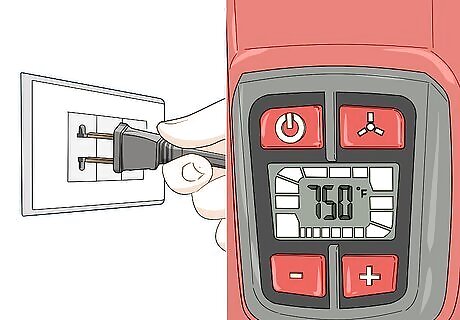
Plug in your heat gun and set the temperature to 450–750 °F (232–399 °C). Turn the heat gun on and use the buttons on the gun to increase or decrease the temperature. Start at the lower end of the temperature range and increase the temperature gradually as you work if needed. Avoid increasing the temperature over 750 °F (399 °C) or you could end up boiling and peeling the paint off instead of drying it. Any heat gun with adjustable temperature settings will work for drying paint. Heat guns work best on hard interior and exterior painted surfaces, like painted walls and wooden furniture. Avoid using a heat gun to dry paint on paper or canvas since it could ruin the surface. Instead, try using a hairdryer to quickly dry artwork. Refer to the manual that came with your heat gun if you’re not sure how to adjust the temperature setting.
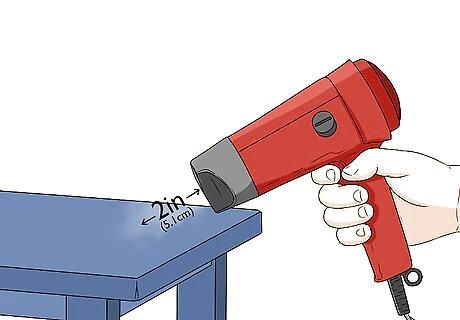
Hold the heat gun at least 2 inches (5.1 cm) away from the paint. If you hold it any closer, you could damage the surface and cause the paint to peel off. As you’re working, make sure you continue to hold the heat gun at a safe distance from the paint.
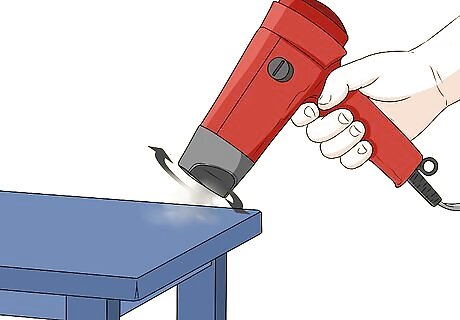
Aim the heat gun nozzle at the paint while continuously moving it around. Point the nozzle that the hot air is blowing out of directly at the paint you’re trying to dry. Keep the heat gun moving at all times so you’re not heating one area for too long. Use back and forth or up and down motions as you work your way across the surface you’re drying.Tip: If you’re drying a large surface, like an entire wall, you may find it easier to work on one section at a time.
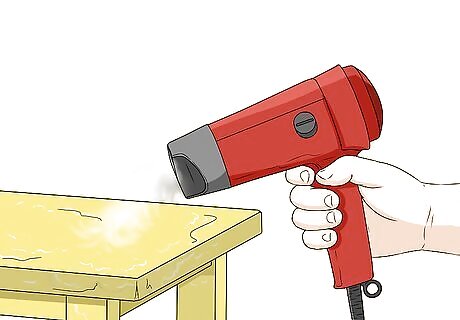
Continue blowing hot air on the paint until it’s dry. The amount of time it takes the paint to dry will depend on the type of paint, how thick it is, and how large of an area you’re working with. It could take you around 10 minutes to dry a 1 ft × 2 ft (0.30 m × 0.61 m) area of paint, so plan accordingly. If you don’t have the time or energy to fully dry the surface you’re working on, using a heat gun can still be an effective way to speed up your paint’s drying time. You can dry it as much as you can with the heat gun, then let it finish air drying the rest of the way.
Using a Heat Gun Safely

Make sure your work area is free of flammable materials. Heat guns produce extremely hot air that can cause a fire or explosion if it comes into contact with flammable materials, like aerosol paint canisters, paint thinner, acetone, and gasoline. Before you turn on your heat gun, double-check that there aren’t any flammable materials lying around near the surface you’re working on.
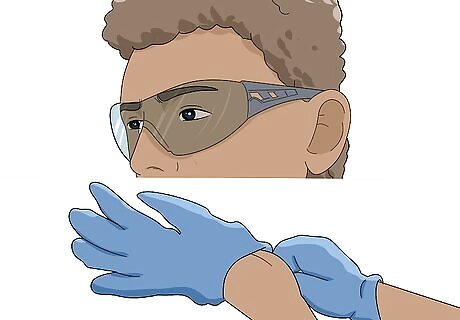
Wear the proper safety gear while handling a heat gun. You should always wear safety goggles and gloves when you use a heat gun to protect your eyes and hands. Avoid wearing loose clothing since it could get in the way of the nozzle and catch fire. If you have long hair, tie it back before you use the heat gun.
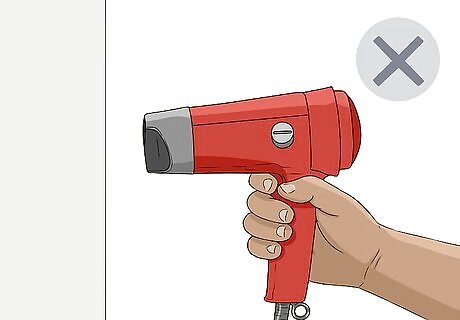
Don’t place the heat gun nozzle directly against the surface you’re drying. Not only can this damage the surface and cause the paint to peel off, it can also block the heat gun’s air flow and cause it to overheat and catch fire. For the purpose of drying paint, you shouldn’t need to hold the nozzle closer than 2 inches (5.1 cm) from the surface.
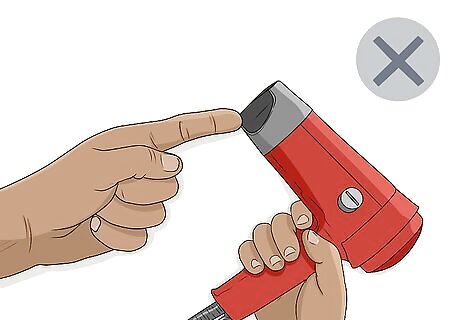
Avoid touching the nozzle or aiming the heat gun at yourself. The air coming out of a heat gun can get extremely hot and cause serious burns. Never aim the nozzle at yourself or anything besides the surface you’re drying. You should also never touch the nozzle where the hot air comes out since it can get extremely hot.
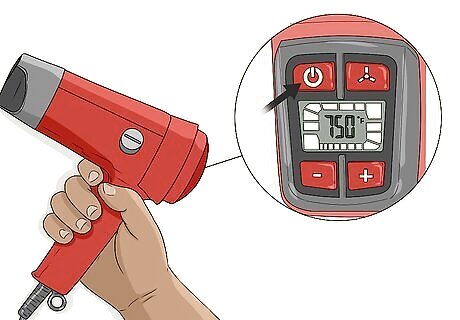
Turn the heat gun off before setting it down. Placing a heat gun down while it’s still on and hot is a fire hazard. When you’re done using the heat gun, or if you need to take a break from drying your paint, turn the heat gun off and set it down upright so the nozzle is pointing up and not leaning on anything. Your model of heat gun may have a cool-down setting that you can put it on when you’re not using it.
















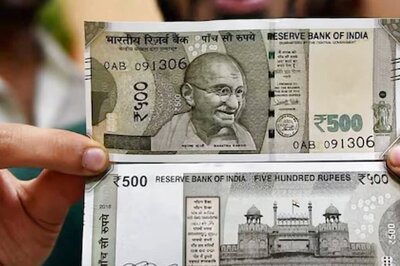
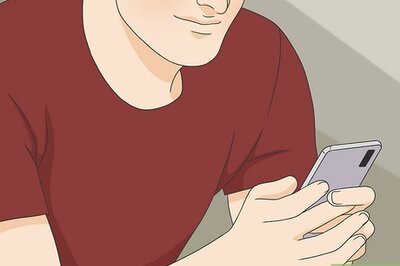


Comments
0 comment